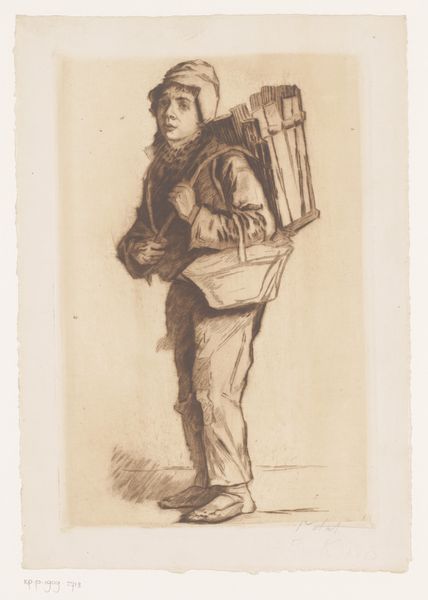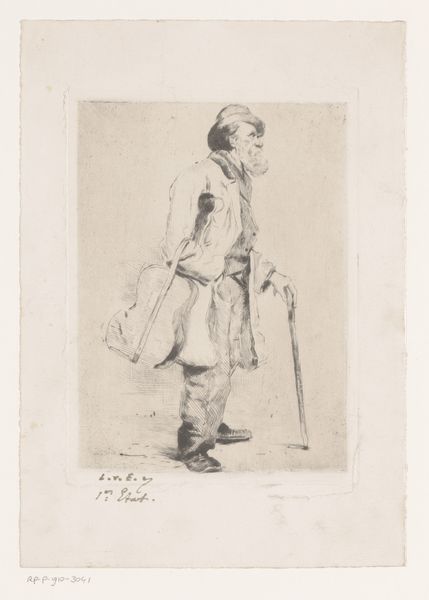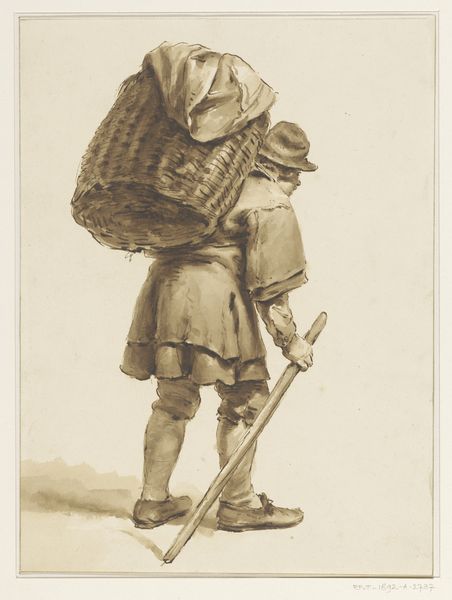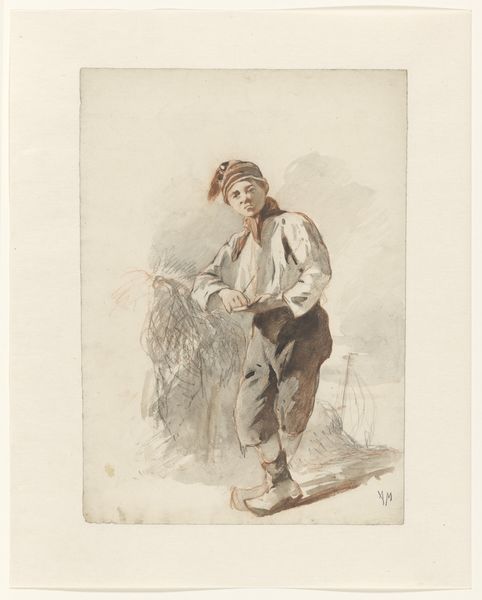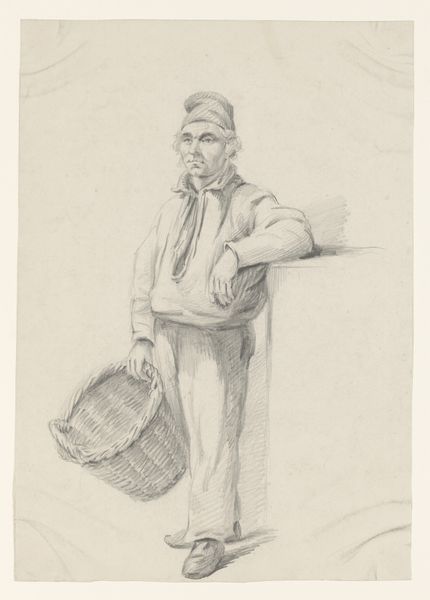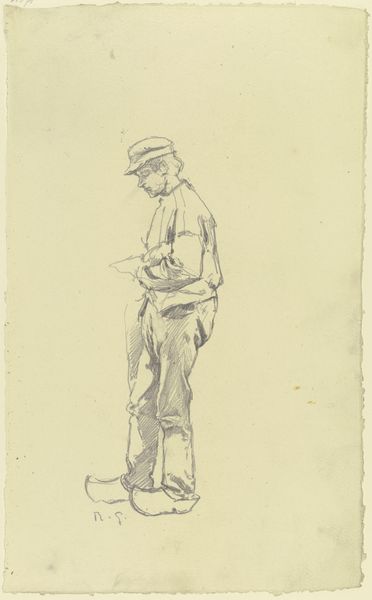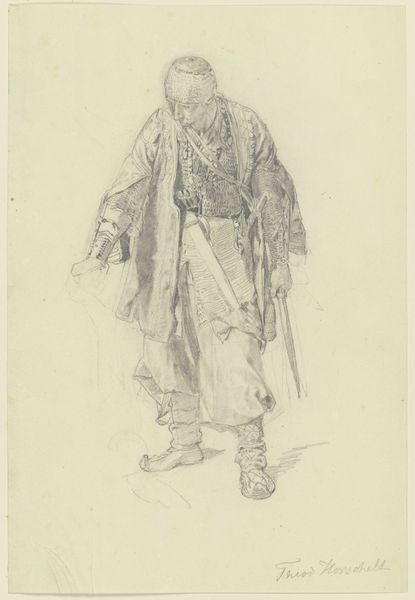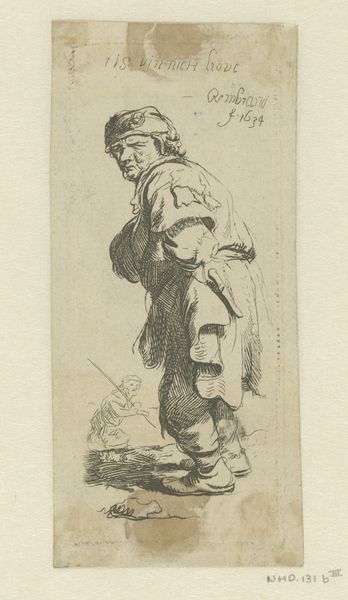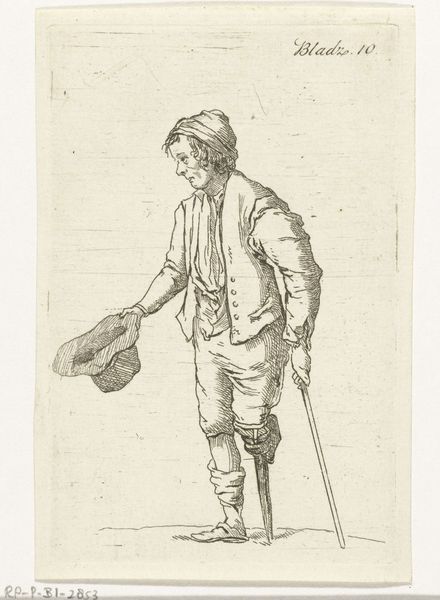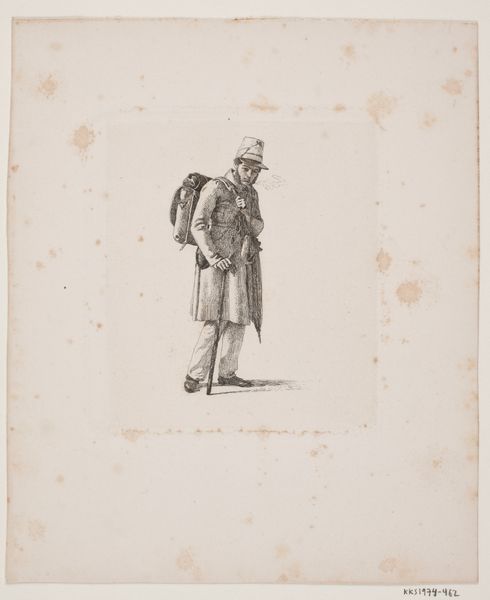
drawing, pencil
#
drawing
#
pencil sketch
#
figuration
#
romanticism
#
pencil
#
genre-painting
Dimensions: height 222 mm, width 145 mm
Copyright: Rijks Museum: Open Domain
Curator: Here we have Pieter van Loon’s "Standing Boy with a Stick and a Sack over his Shoulder," created around 1840. The medium is pencil on paper, and the drawing offers a glimpse into the lives of everyday people. Editor: My immediate feeling is melancholy. He looks weighted down, burdened. There’s such a softness in the pencil strokes, yet it conveys a sense of hardship. The angle of his body suggests resignation, almost. Curator: Indeed. Van Loon’s attention to detail, like the wooden shoes and the loosely draped sack, places this drawing squarely within the genre painting tradition, infused with a Romantic sensibility. Note the contrasts: the crisp lines of his clothes compared to the gentle shading of his face. Editor: It's the way he holds that stick. It's not for support; it's just… there. Almost like an extension of his sadness. Do you think the blank space around him emphasizes his isolation? The formal emptiness creates a narrative. Curator: Absolutely, and the choice of pencil amplifies that vulnerability. Pencil, as a medium, feels intimate, immediate. It captures a fleeting moment, almost like a memory fading at the edges. Also note the slightly downward cast of the figure; we never see the eyes, the implied eyeline, a device employed to hint at melancholy. Editor: It’s also very interesting, isn’t it, how the diagonal line from the bottom right echoes with the position of the walking stick itself. I wonder, do you think this element is more than merely illustrative or functional within the composition? Curator: Precisely, and it provides, at once, dynamism but simultaneously counteracts any possible escape by angling sharply downwards; an intentional aesthetic intervention that closes the picture plane, securing this figure permanently to its moment, perhaps? What initially appears Romantic harbors instead a profound entrapment? Editor: So, from formal qualities, right through to the very heart of what constitutes “romanticism”, we suddenly realize, this picture turns in on itself? Perhaps one isn't drawn so much to Romanticism itself but to the feeling one intuits: “the tragic”. It's something, for sure. Curator: Yes. Despite its simple subject matter, the work offers us a complex interplay between technique, theme, and emotion. We have explored and uncovered much to admire, thank you!
Comments
No comments
Be the first to comment and join the conversation on the ultimate creative platform.
